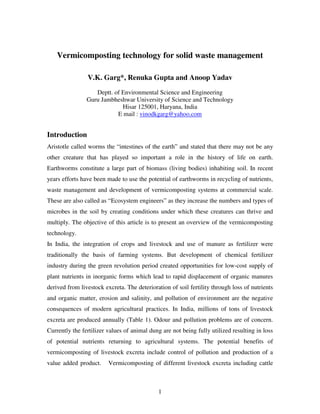Vermicomposting is a process that uses earthworms to convert organic wastes into nutrient-rich vermicompost. The document discusses the vermicomposting process, suitable earthworm species for vermicomposting like Eisenia foetida and Eudrilus eugeniae, and provides their life cycles. It also discusses the basic requirements for vermicomposting like bedding, food sources, moisture, aeration, temperature and pH. Livestock manures, food waste and paper waste are mentioned as some common feedstocks used in vermicomposting.














